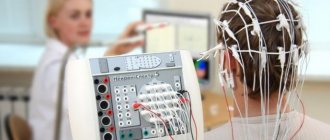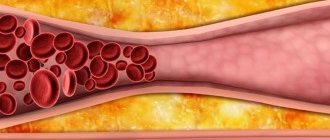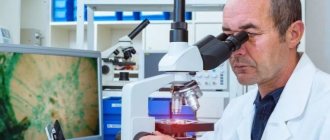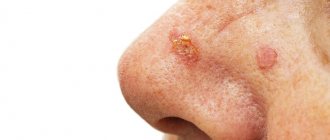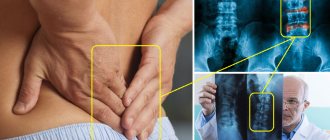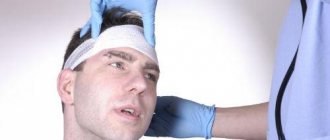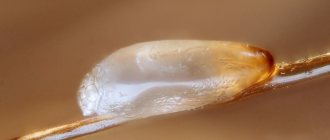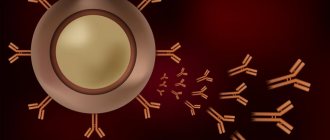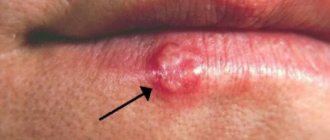From this article you will learn:
- Description of androgenetic alopecia
- The effect of androgens on hair condition
- Risk factors for developing androgenetic alopecia
- Symptoms of androgenetic alopecia
- 2 types of androgenetic alopecia
- Diagnosis of androgenetic alopecia
- 3 Ways to Treat Androgenetic Alopecia
- Drug therapy for androgenetic alopecia
- Treatment of androgenetic alopecia in men and women
- Laser therapy
- Mesotherapy and hair transplantation
- Treatment of androgenetic alopecia with traditional methods
Androgenetic alopecia is a special type of baldness that affects both men and women. This disease occurs due to hormonal imbalances that provoke intense hair loss in certain areas of the head. In the stronger half of humanity, such thinning of hair appears after 30 years, and in women after 50.
Various methods are used to treat alopecia, including medications, physical therapy, and surgery. The method of therapy is selected by the doctor depending on the causes of the disease.
Description of androgenetic alopecia
Alopecia is baldness. Androgenetic alopecia is a disease caused by increased sensitivity of hair follicles to dihydrotestosterone, the active form of the male sex hormone testosterone.
This hypersensitivity of the follicle to testosterone is a genetic disorder, which in 75% of cases is transmitted to the child from the mother. Medicine believes that androgenetic alopecia is a hormonal disease that can be hereditary.
Recommended articles on the topic:
- Diffuse alopecia in women
- Plasma therapy for the scalp
- Useful vitamins for hair: against hair loss and for growth
Androgenic (androgenetic) alopecia in men begins to develop in the frontal and parietal regions. Women first lose hair in the area of the central parting, then the hair thins on the top of the head. At the very beginning, the disease manifests itself in thinning hair and deterioration in its appearance. They become dull, lifeless and then fall out. Androgenetic alopecia is difficult to diagnose at first because it develops very slowly. The first signs of pathology appear only at the age of 30, and baldness becomes noticeable only after 10–15 years.
Many people note that with complete baldness of the frontal and parietal parts of the head, the back of the head remains covered with thick hair. This is a characteristic sign of androgenetic alopecia and is due to the fact that the follicles in this area are not sensitive to changes in the level of dihydrotestosterone in the human body.
Features of the course of AGA in the male half
This is the most common type of hair loss (90% of all requests on the topic), which does not stand on ceremony with age. Affects half of those under 50 and more than 70% of older people. Androgenic alopecia can occur earlier, even in adolescence. But in general it is subject to a number of stable influences.
- "BAD" HERITANCE. According to statistics, the risk of premature loss of hair in 75% of cases is transmitted through the maternal line, another 20% through the paternal line, and the rest of those affected become “pioneers” in their family. Attempts are being made to establish the DNA responsible for such a genetic predisposition, but there is still no clarity here. In the meantime, the frequency of hair loss in males is 8 times higher than that of the fair sex.
- EMOTIONAL COMPONENT. It is believed that men are less sensitive to their own baldness. Moreover, the iconic image of a bald, cool macho is an unconditional success. But this is in the movies. In life, approximately 40% of potential brutals consider their condition to be uncomfortable. In Moscow, a Union of Bald People has even been created, of whom there are already more than 2% of the population in Russia, which, by the way, also accepts women.
- PRESSURE OF EXTERNAL FACTORS. Poor ecology, infectious diseases (syphilis, tuberculosis), unhealthy diet, abuse leading to liver diseases, taking hormonal drugs to “pump up”, acute stressful conditions do not add gray hair, but simply quietly oppress and destroy it. Endogenous factors also play a negative role, in which seborrhea and toxins lead to inflammation of the follicles.
- SEVERE COMPLICATIONS. Unfortunately, complete genetic damage occurs when there is no native plant material left for transplantation. Every thousandth inhabitant of the Earth will fall into this sad martyrology.
Can androgenetic alopecia be cured?
Patients often receive evasive answers to this question from doctors. As a rule, this occurs due to the doctor’s lack of qualifications or the desire to put the treatment of androgenetic alopecia on a “long” commercial basis.
At the RTH clinic you are sure to receive a direct and comprehensive answer quickly. Cases where nothing at all can be corrected during the treatment of androgenic alopecia are rare. Taking into account the possibility of surgical suppression of the disease - transplantation, this figure tends to zero.
It is only important to contact a trichologist in a timely manner and take into account that a man with AGA has worse prospects for therapeutic treatment than a woman. In the former, alopecia of androgenic origin can be stopped and the condition of the hair can be maintained in the future. But it cannot be returned to its original state. And ladies, after treatment for baldness, often abandon wigs forever.
Androgenetic alopecia in women
Although androgenetic alopecia in women is half as common as in men (approximately 40% of all ages and especially over 60 years of age are affected by it), women consult a doctor earlier and faster, literally with the appearance of the first signs of the disease. There are other features of the course of female AGA.
- EMOTIONAL SUPPRESSION. The fair sex, for obvious reasons, experiences hair loss more acutely and deeply, especially severe baldness. Although a wig hides flaws, it does not add to the quality of life: it can lead to persistent states of depression and anxiety.
- NATURE OF LEAKING. The disease begins later than in men, develops more slowly, and is often subtle at first. The damage to the scalp begins in the central parting area, then spreads to the crown. A pronounced thinning zone, similar to a nest, gradually forms. Areas of complete baldness are extremely rare.
- SPECIAL TRIGGER MECHANISMS. In addition to an excess of male hormones, this may be a hormonal imbalance after pregnancy, various types of tumors, and oncological formations. Sudden weight loss with loss of protein, strict diets with a decrease in minerals, abuse of hair dryers, frequent styling procedures using varnishes, mousses and other “chemicals,” and uncontrolled use of combined oral contraceptives have a bad effect. And today - the consequences of coronavirus for those who have had it.
- DIAGNOSTIC COMPLEXITY. The symptoms of female androgenetic alopecia are less distinct. Therefore, in each case, it is important for the doctor to obtain accurate evidence of the attack of male hormones. Moreover, some women have a syndrome of congenital insensitivity to androgens, and, on the other hand, hyperandrogenism (increased levels of male sex hormones) in itself does not automatically lead to AGA. Some diseases, such as latent anemia associated with a lack of ferritin (a protein that stores iron), lead to hair loss and give symptoms of “pure” androgenic alopecia. The definition of androgenetic alopecia for a woman with a normal menstrual cycle, which indicates the absence of hormonal disorders, seems extremely controversial. All this requires us to approach diagnosis very carefully. It is no coincidence that in the USA and some European countries the word “androgenic” was completely excluded from women’s stories of this disease. By replacing “androgenetic alopecia” in medical usage with the streamlined “female pattern hair loss, FPHL” - female pattern hair loss.
- BETTER TREATMENT RESULTS. Provided that it is comprehensive and carried out by experienced specialists in a specialized clinic. An optimistic forecast is based on the fact that female follicles do not completely atrophy and are more actively restored.
Treatment of androgenetic alopecia at the RTH clinic
The main principle is the concentration of medical competencies, that is, providing the patient with the opportunity to quickly and accurately diagnose, receive all the necessary types of treatment from traditional to modern, with positive dynamics and effect. For this purpose, the RTH clinic, where trichology has been practiced for three decades, has a number of advantageous capabilities compared to similar medical institutions in Moscow:
MEDICAL ALLIANCES. Getting rid of AGA is at the intersection of the competencies of a trichologist and a dermatologist, and in some cases, a cosmetologist. We have enough such high-quality tandems and trios for 10 or more patients per day without losing the quality of services;
POWERFUL DIAGNOSTICS. It is crucial for determining the disease and consists of multifunctional diagnosis - blood, the state of sex hormones (primarily estrogens, testosterone), checking the thyroid gland, trace elements and vitamins, the degree of concentration of iron, ferritin and vitamin B12 in the blood. And also in conducting such special studies as macro photography, trichoscopy, phototrichogram, dermatoscopy, traction test (pulling). The use of “fresh” expert-class equipment in the clinic makes it possible to diagnose using the “single window” principle. In the building on Roshchinskaya, the patient can undergo almost any test for conditions directly or indirectly related to androgenetic alopecia. Including, consult a gynecologist and endocrinologist.
PUBLIC CONSULTATIONS. We believe that the more people are educated about the problems of baldness and have an idea of the level of our specialists, not from hearsay, the better. Therefore, we use the practice of quick answers to questions and free consultations through the website, as well as speeches and dialogues by trichologists, cosmetologists, and dermatologists of the clinic on social networks.
As for the treatment protocol for AGA, RTH uses:
- Injection methods - fractional mesotherapy, macropapules, proprietary courses of pharmacopuncture (individually selected cocktails with ingredients including B vitamins, peptides, amino acids), plasma therapy;
- External preparations - ranging from the well-known and proven minoxidil and minoxidil-like substances, ending with certified 5-alpha reductase and receptor blockers, course therapy without toxins, improving blood supply to the scalp and stimulating hair restoration;
- Preparations for oral administration - multivitamins and medications on a natural and herbal basis;
- Physiotherapy – to improve nutrition of the scalp and follicles.
Read about the most radical way to get rid of baldness - transplantation - on other pages of the site.
What you need to know about AGA and do, and what to refrain from
- If you felt something was wrong, run to the trichologist. With hair still blowing in the wind.
- There is no need to independently “write out prescriptions” for medications for internal and external use. One of the “miracle” remedies (with the letter F) is prohibited for sale in the USA, Great Britain, and other European countries with the note “the risk-benefit ratio is incomparable.” In Moscow it is even sold without a prescription.
- With any symptoms, without test results, a diagnosis of alopecia of hormonal origin in a woman cannot be established.
- Treatment of AGA is a protracted matter, not for one month, there are no quick solutions. Much depends on the patient’s willingness to fight the disease.
- Cosmetology, unfortunately, cannot solve the problem of alopecia.
- Educational program on the Internet is a useful thing. But you don’t need to blindly trust strangers, especially those without medical education.
The effect of androgens on hair condition
Male sex hormones are collectively called androgens. They are produced in all people, but their quantity is related to gender; women have significantly less such hormones.
One of the androgens is testosterone, due to its high level in men:
- large and strong muscles;
- hair grows in large quantities not only on the head, but also on the face and body;
- mammary glands do not develop;
- a characteristic male voice, low and rough, and good stamina.
Androgens are necessary for the metabolic process and are responsible for normal sugar levels. The strength of their effect on the body differs, so androgens are divided into two groups - weak and strong. Testosterone, already familiar to us, and its weaker version, dihydrotestosterone (DHT), belong to the strong group. They are part of the enzyme 5-alpha reductase, which, with a genetic predisposition, can be present in the scalp and can cause the development of androgenic alopecia.
Despite the fact that androgens and estrogens have common metabolic processes, their effects on the body are opposite. The lifespan of hair depends on estrogen levels. One of them, estradiol, is especially actively produced during pregnancy. This is why women in interesting situations have hair that becomes thicker and practically stops falling out.
In the first weeks after childbirth, estrogen production decreases sharply, and hairs in the growth phase begin to fall out, and the hair noticeably thins.
Methods of therapy for AA
Drug treatment in the treatment of AA rarely produces positive results, in which the process of damage to the follicles stops and normal hair growth is restored.
According to statistics, such therapy leads to restoration of hair growth in only 10% of patients; in 20–30% it is only possible to stop the process of hair loss.
Since the 1980s growth stimulants (benoxaprofen, diazoxide) were used to treat AA; now only the vasodilator drug Minoxidil is used. When treated with it in the early stages of the disease, vellus hair is gradually replaced by normal hair in 30% of patients.
The treatment is effective only with long-term use of Minoxidil; the result usually appears after 10–12 months.
The result of successful treatment with Minoxidil at the initial stage of AA
PRP therapy and mesotherapy with drugs with antiandrogenic components give good results in stopping hair loss.
A study conducted to compare the effectiveness of topical Minoxidil therapy and intradermal platelet-rich plasma (PRP) therapy confirmed the promise of the latter.
Two groups of 20 patients each were treated for six months using different methods. Results were assessed using magnified photographs, hair stretch tests, growth questionnaires, and patient satisfaction. On all counts, PRP therapy was ahead, which makes it a successful alternative to Minoxidil.
During mesotherapy, using the technique of superficial micropapules, a therapeutic cocktail of amino acids, vitamins and vascular preparations enters the scalp. Nutrients are delivered directly to the hair follicles, due to which the follicles are saturated with the drug and the hair thickens.
Risk factors for developing androgenetic alopecia
When studying the causes of androgenetic alopecia, experts identified several factors leading to the development of pathology:
- Gender. Men suffer from androgenic pattern baldness 4–5 times more often than women.
- Age. Every second man and fourth woman over 50 years old finds signs of androgenetic alopecia.
- Hormonal imbalance. Hormonal imbalance in women usually occurs after pregnancy or during treatment with medications containing male hormones. In men, the cause of alopecia can be the use of drugs that activate testosterone production, for example, various types of doping agents.
- Heredity. If androgenetic alopecia was identified in previous generations, or if relatives suffered from severe hair loss for no apparent reason, then the probability of this pathology occurring in subsequent generations is close to 80%.
- Various types of tumors and damage to the glands that produce sex hormones.
- Hyper- or hypofunction of the pituitary gland.
- Oncological formations in the adrenal glands or increased function due to certain diseases.
- Decrease or increase in the level of hormones produced by the ovaries and testicles in orchitis, polycystic disease, ovarian sclerocystosis, ovarian disease.
If the patient has at least one of the listed risk factors and his hair has noticeably thinned, then you should not postpone a visit to the dermatologist. After examination, the doctor will either decide that it is androgenetic alopecia or diagnose another cause of hair loss.
Symptoms of androgenetic alopecia
Determining that hair loss is the result of androgenetic alopecia is not so easy. Symptoms may be mild; the correct diagnosis will depend on the gender of the patient and examination of the hair for pathological changes. The only characteristic sign is damage to the hair follicles only in the forehead and crown of the head, because it is in these parts of the hairline that an enzyme sensitive to dihydrotestosterone is found.
The manifestation of androgenetic alopecia in women may look like:
- decrease in hair density in the frontal and parietal parts of the head, but it does not reach complete baldness;
- changes in the menstrual cycle - androgens interfere with the work of estrogens, which causes menstrual irregularities;
- acne, usually appearing on the face and back;
- hirsutism – hair growth in places where women traditionally do not have pronounced hair (chest, back, face).
Androgenetic alopecia in men makes itself felt by sparse vegetation in only two areas of the head - frontal and parietal.
Medicines
Prescribing medications has two goals - to correct the hormonal status that affects hair loss in women, and to improve the nutrition of the follicles and accelerate hair growth. Drug regimens include:
- Hormonal agents with corticosteroids.
- Antihistamines.
- Drugs that stimulate hair growth. As a rule, they are based on minoxidil, the only compound that is effective for androgenetic alopecia and is approved in the United States.
External agents for rubbing into the skin are also prescribed. They increase blood circulation and accelerate the flow of nutrients to the follicles. The Doctor Hair clinic actively uses mesotherapy - injections of meso-cocktails that contain nutrients that activate and strengthen the hair bulbs.
Diagnosis of androgenetic alopecia
Sometimes androgenetic alopecia is determined based on a visual examination, since in patients with this pathology the level of hormones in the blood does not exceed normal. To exclude other possible causes of severe hair loss and determine effective treatment, diagnostic and laboratory tests are prescribed.
Types of tests for androgenetic alopecia in women and men:
- biochemical blood test - to determine the amount of microelements;
- tests for TSH, T3, T4 - for the presence of thyroid hormones;
- tests for sex hormones - to determine the level of testosterone, prolactin, estrogen;
- complete blood count and serum iron test;
- analysis for the level of adrenocorticotropic hormone (if adrenal disease is suspected).
If this is necessary, then to complete the picture, the attending physician may prescribe an ultrasound of the adrenal glands and a CT scan of the brain. The patient is referred for consultation to an endocrinologist, gastroenterologist, gynecologist, neurologist, and trichoscopy is performed.
Causes of the disease
According to medical statistics, a connection between hair loss and male hormones is found in 42% of women, and this problem becomes more pronounced with age. The main reason for its appearance is considered to be heredity; it is transmitted mainly through the maternal line. Other reasons:
- Hormonal changes due to pregnancy, during menopause. During these periods, the level of male hormones in the female body may increase.
- Endocrine disorders. AGA occurs especially often in polycystic ovary syndrome.
- Taking certain medications - for example, antibiotics or incorrectly selected COCs.
Hair loss in women caused by hormonal changes in the body cannot be cured by cosmetic methods. Treatment involves a set of measures, including hormonal therapy, and therefore should only be prescribed by a doctor.
In addition, the disease can begin even with normal androgen levels if the follicles are hypersensitive to them. This happens when the activity of aromatase, the enzyme that transforms androgens into estrogens, is reduced. To accurately determine the cause of the disease and prescribe treatment for androgenetic alopecia, an examination using laboratory methods is necessary.
Mesotherapy and hair transplantation
Mesotherapy is the introduction of medications directly under the skin, as close as possible to the hair follicles. For therapeutic injections, combinations of vitamins and microelements are used. This method speeds up metabolism and fills the follicles with nutrients. Hair plasma lifting works in a similar way, when instead of drugs, blood plasma taken from the patient’s vein is injected under the skin.
Painful sensations during subcutaneous injections are minimal. In terms of time, one session is about 40 minutes; to obtain a visible effect, it is necessary to carry out at least 10 procedures. For androgenetic alopecia, the drug “Dutasteride” is used for medicinal mixtures as the most effective. Almost two thirds of patients who have undergone 12 sessions of this mesotherapy note a noticeable improvement in the condition of the scalp. In the photo, androgenetic alopecia becomes almost invisible.
For those who do not like injections, mesotherapy can be performed using a mesoscooter. There will be results too, but not quickly.
Not long ago, another method of treating androgenetic alopecia appeared - hair transplantation. In the first operations, artificial or foreign hair was used as transplant material. But in the postoperative period, many complications arose in the form of purulent inflammation and rough scars. Now the patient's own hair is used for transplantation. 1-2 follicles along with pieces of skin (grafts) are taken from the occipital or behind-the-ear area.
Treatment methods for alopecia:
The procedure should be carried out by a dermatovenerologist or trichologist!
Mesotherapy procedures
These are intradermal injections of polyrevitalizants containing vitamins, microelements, amino acids, antioxidants, hyaluronic acid, etc. Treatment is carried out in courses of at least 5 procedures.
The main goal is to stop pathological hair loss, stimulate the growth of new hair, improve the quality of long (terminal) hair, and subsequently increase the thickness of the hairstyle. It is important to remember that the rate of hair growth is 1-2 cm per month, so the effectiveness of treatment can be assessed no earlier than after 1-2 months.
Scalp mesotherapy is prescribed for all types of non-scarring alopecia (androgenetic, diffuse, focal, seborrheic, symptomatic). For patients with androgenetic alopecia, in addition to the main course, constant maintenance therapy is recommended (single procedures once every 3-6 months) to stabilize the achieved effect. This disease can be corrected, but a complete cure cannot be achieved due to the genetic nature of the disease.
Rice. A patient diagnosed with androgenetic alopecia before and after mesotherapy treatment. Photos from the collection of dermatovenerologist (dermatologist), trichologist V.A. Konstantinova.
Treatment of androgenetic alopecia with traditional methods
Since ancient times, traditional medicine has offered various ways to strengthen hair, increase the density of curls, and reduce the rate of baldness. But all of them will give the expected effect only when used together with medications.
- Onion rub. At the first signs of thinning, it is recommended to rub a mixture of chopped onion into the hair roots. Leave the mask on for an hour and a half, then wash off with strengthening or regular shampoo. If you add crushed garlic and a little honey to the onion mass, the procedure will be even more effective.
- Pepper tincture. Grind the pepper, pour in 100 ml of vodka and leave for 24 hours. Then rub the tincture into the scalp and after an hour and a half, wash your hair thoroughly.
- Onion-cognac tincture. Grind a medium onion through a meat grinder and pour 200 ml of cognac into it. The mixture should sit for several hours. To achieve a positive result, the tincture must be rubbed into balding areas of the head daily.
- Mustard mask with castor oil. Take one tablespoon of dry mustard, mix it thoroughly with 30 ml of castor oil and let it brew for 20-30 minutes. To reduce the amount of hair falling out, a mustard mask should be applied to the scalp for 40–50 minutes. The session is carried out before each hair wash 1-2 times a week.
- Nettle lotion. The therapeutic effect is obtained by using nettle for androgenetic alopecia. In a saucepan with 5 tbsp. spoon leaves, pour 450 ml of water, add 2 tbsp. spoons of vinegar and put on the stove. Bring the mixture to a boil, keep on low heat for half an hour, then remove and cool. The product should be rubbed into the scalp every day before bed.
- Salt mask. Good results are obtained by rubbing regular or sea salt into the scalp 30–40 minutes before washing it.
- Mask with vitamins and Dimexide. Mix 2 tbsp. spoons of castor and burdock oil, add to them 1 teaspoon of vitamins A, E and 1 tbsp. spoon of Dimexide. The prepared mixture is rubbed into the roots of thinning hair and left for one hour.
- Tincture to strengthen follicles. Pour 1 tbsp into a jar. spoon of nettle and crushed burdock root, pour a glass of alcohol, add 1 bottle of alcohol tincture of mint and propolis. Close the jar tightly and put it in a cool place for a week. Then filter the composition and pour into a container with an airtight lid. Rub the resulting lotion daily before bed.
- Mask with sea buckthorn oil. Mix 1 teaspoon of sea buckthorn oil with 6–8 drops of grapefruit oil, 1 teaspoon of vitamins A, E and heat in a water bath. Then add 1 spoon of Dimexide to the mixture. Apply the mixture to the hair roots and leave for an hour.
Due to the fact that androgenetic alopecia is difficult to treat, some medications will have to be used throughout life, taking short breaks between courses. Otherwise, baldness will progress.
Why clients choose Veronika Herba Beauty and Health Center:
- This is a beauty center where you can take care of yourself at a reasonable cost, while your face and/or body will be treated not by an ordinary specialist, but by one of the best in Moscow. This is a completely different, higher level of service!
- You can receive qualified help at any time convenient for you. The beauty center is open from 9:00 to 21:00, seven days a week. The main thing is to agree with your doctor in advance on the date and time of your appointment.
Sign up for a consultation with a specialist by phone +7 (495) 085-15-13
, and you will see for yourself!
Treatment
After a relatively short time (an average of 2-3 years), irreversible atrophic changes form in the structures of the hair follicles. The sooner treatment is started, the greater the chance of restoring the previous hair thickness!
The choice of treatment tactics for alopecia depends on:
- duration of the disease,
- degree of severity of clinical manifestations,
- the presence of chronic diseases,
- effectiveness of previous therapy.
The institute provides treatment for patients with hair loss and thinning of the scalp!
- A diet for alopecia requires adequate nutrition: the patient’s diet should contain animal proteins. Those. Vegetarianism and veganism are strictly contraindicated for them!
- Proper care of hair and scalp is necessary: delicate combing, individual selection of hygiene products (shampoos, balms), avoidance of hair coloring and perms during the period of active hair loss, etc.
- In parallel with the examination of patients, complex therapy is carried out, including the prescription of systemic medications and external therapy that stimulates hair growth and stops intense hair loss.
If such local treatment does not have an effect within 1 month, then it is necessary to immediately move on to more effective methods. This is due to the fact that after a relatively short time (on average 2-3 years), irreversible atrophic changes form in the structures of the hair follicles. Therefore, the sooner treatment is started, the greater the chance of restoring the previous hair thickness!
Sometimes the degree of thinning and the intensity of hair loss are so pronounced that mesotherapy or PRP therapy of the scalp must be started as early as possible (without using lotions first).

